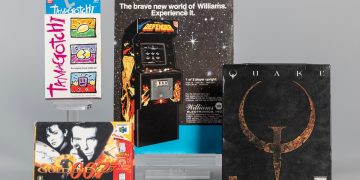When it comes to crafting the core gameplay and storyline that define a game, there’s always a fascinating journey behind the scenes. Fukushima shares, “Acquire initially had a great idea for the gameplay, so we let them take the lead on prototyping it. Their concept was simply put: ‘A Mario story that’s uniquely yours, with experiences on drifting islands.'”
Ohashi adds, “I was really intrigued by the idea of drifting islands. The notion of discovering new lands, embarking on adventures, and forming alliances with the locals felt exciting. It was all about connecting these islands and expanding your circle of companions.”
Otani chimes in, saying, “I have to hand it to them—it was an innovative idea. We definitely hadn’t thought of anything like that during our sessions at Nintendo. The concept of linking various islands wasn’t something that came up in the usual brainstorming sessions,” he laughs.
However, Ohashi points out, “Capturing that quintessential ‘Mario & Luigi-like’ vibe took longer than expected, which meant our testing of the drifting island element was delayed. It took time to conceptualize how this feature would integrate into our game before we could pitch concrete ideas to Nintendo. I suspect this delay made them a bit uneasy.”
Otani admits, “Honestly, I was feeling a bit antsy. Both Fukushima and I were eager to know when Acquire would present their ideas,” he laughs.
Fukushima explains, “Yet, we had faith in Ohashi. He’s the kind who thinks deeply before presenting a solution, which we respected. We did, however, hold numerous strategy meetings to figure out how long we could wait.”
“In our game, Shipshape Island acts as the base for Mario and his friends’ adventures,” Ohashi elaborates. “The island drifts across the ocean, heading towards various other islands for new quests. Developing the mechanics for this, like the island’s movement across a vast sea, was definitely challenging.”
Fukushima points out, “Typically, in game development, the gameplay and story arc are established early on, with details finalized as the project progresses. However, this process took longer here. We were fleshing out battles and exploration actions without having settled major aspects like Shipshape Island’s traveling system or the scope of the islands and their themes. It felt like chasing after a mirage.”
Otani notes the differing approaches between the two companies: “Our past projects involved developing gameplay first and then creating a storyline to enhance it, with the director steering the whole process. But Acquire did things differently. Ohashi focused on the drifting island gameplay while we engaged an external story team to craft the narrative. Being an RPG, the story and gameplay had to go hand in hand to move forward.”
Ohashi confesses, “The story team struggled to nail the ‘Mario & Luigi-like’ essence. They found it tough to weave a fitting tale.”
You must be wondering when the breakthrough happened, right? Ohashi recalls, “I remember us brainstorming the plot and deciding on a unique theme for each sea: ‘family’ for the first, ‘friends’ for the next, and so on.”
Fukushima agrees, “That marked a turning point. With the theme of ‘connection,’ different elements started aligning. While the gameplay was centered on linking islands, it also highlighted the bonds between the people inhabiting these islands.”










![[PS5] Review of Lost Records: Bloom and Rage – Tape 2 [PS5] Review of Lost Records: Bloom and Rage – Tape 2](https://www.intergamerz.com/wp-content/uploads/2025/04/Complimentary-Game-Lost-Records-Bloom-and-Rage-PS5-Giveaway-North-360x180.jpg)






















![[Industry Direct] PHI Studio & Agog Invite Applications for a Four-Week Residency for Immersive Artists [Industry Direct] PHI Studio & Agog Invite Applications for a Four-Week Residency for Immersive Artists](https://www.intergamerz.com/wp-content/uploads/2025/05/Industry-Direct-PHI-Studio-Agog-Invite-Applications-for-a-360x180.jpg)












